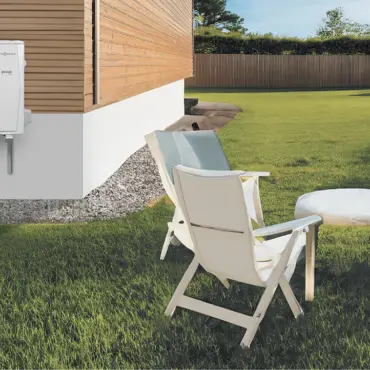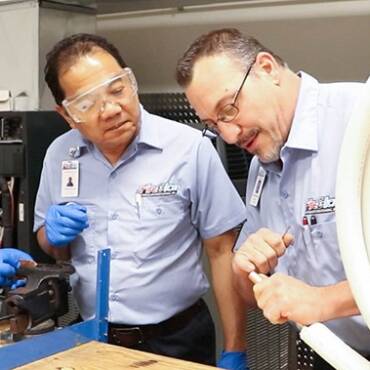✕
Air quality has been deteriorating throughout the world due to emissions from power plants, automobiles, and industrial processes. In addition, organics used in indoor building materials, carpets, paints, and surface finishes add to the indoor air quality problems. The emergence of COVID and other viruses, and their transmission through air has affected the whole world. The pollutants of most concern in the indoor air are biological (viruses, bacteria, mold, and other spores), volatile organic chemicals (VOC), and other allergens, such as droppings of dust mites and cockroaches, etc. These pollutants not only make people sick, they have also been the main cause of allergies and asthma in a large part of the global population.
In the past, air-cleaning technologies just focused on filtration of particulate matter, the best being HEPA filters. However, HEPA filters cannot effectively remove all viruses and VOCs. Moreover, Bacteria or mold spores that are trapped on the filter could multiply on the filter and become a problem if the filters are not replaced regularly. In recent years, UV-C technology has been gaining popularity for large buildings. However, UV-C is hazardous to be exposed to and produces Ozone. Photocatalytic Oxidation (PCO) and Photo Electro-Chemical Oxidation (PECO) technologies have been introduced to overcome the shortcomings of uncoated HEPA filters. Dr. Yogi Goswami developed both of these air purification technologies for indoor air. PECO technology was shown to be effective against biological pollutants, such as bacteria, viruses, and spores, as well as against molecular pollutants, such as VOCs.
Now a next-generation Plasmonic Photonic technology has been developed for disinfection and detoxification of indoor air. It is the most advanced indoor air disinfection and purification technology to provide protection against any future pandemic as well as other pollutants in indoor environments. The new technology makes use of Plasmonic nanoparticles catalyst that emits waves that cause resonance with the incoming photons of UV-A light and enhance the effectiveness of the photons, making this process more effective than any other existing technology. The new Plasmonic Photonic technology has been tested extensively for effectiveness against viruses, bacteria, mold, and other fungal spores, and Volatile Organic Chemicals (VOCs). The technology has been incorporated into the Applied Photonix’s ViroZapTM products. Figures 1 and 2 show the product configuration and a picture of one of the products.
The ViroZap products are UL certified. They are also FDA 510(K) cleared based on their performance against various viruses, bacteria and mold and other fungal spores.

Figure 1: Configuration of a ViroZapTM unit, consisting of a pre-filter, low-grade UV-A LEDs, and a medical-grade catalytic filter.

Figure 2: ViroZap unit for In-Duct Application in a central A/C system.
Performance of Plasmonic Photonic Technology Against Viruses, Bacteria, And Fungal Spores
Tests were conducted at the ARE Labs to study the performance of the Plasmonic Photonic technology against aerosolized ssRNA virus, ssDNA virus, Gram-negative bacteria, gram-positive bacteria, bacteria endospores, and mold spores.
Experimental Set-Up: Experiments were conducted in a large, sealed aerosol chamber to simulate a contaminated room. The test chamber’s internal dimensions are 9.1 ft x 9.1 ft x 7 ft, with a displacement volume of 579 cubic feet, or 16,000 liters. Figures 1 and 2 show a schematic and a picture of the chamber.

Figure 3: Schematic and flow Diagram of the Bio Aerosol Test Chamber.
Complete description of the experimenta and the results is given in the ARE Lab report submitted to FDA. The main results of the study are given below.

Figure 4: Performance of the Plasmonic Photonic device against viruses. MS2 (RNA virus) 5 log or 99.999% reduction in 20 minutes. PhiX (DNA Virus) 5.34 log or 99.9995% reduction in 20 minutes.

Figure 5: Performance of the Plasmonic Photonic device against Bacteria. S. epidermidis (Gram Positive) 5.17 log or 99.9993% reduction in 20 minutes PhiX (Gram Negative) 5.34 log or 99.9995% reduction in 20 minutes.

Figure 6: Performance of the Plasmonic Photonic device against mold and fungal spores. Aspergillus brasiliensis (Black Mold) 99.9939% reduction in 20 minutes. Bacillus subtilis(cousin of Anthrax) 99.9961% reduction in 20 minutes.
Experimental Investigation of Performance Against VOC’s
Experiments were conducted in an environmental chamber to demonstrate the improvement of the present technology described herein for the destruction of volatile organic chemicals (VOCs).
Tests were conducted for the destruction of Toluene, a difficult organic to oxidize and destroy. Two catalyst formulations were used, including a Control Basic PECO and a Plasmonic Photonic, with all the other conditions being the same. The incident light was UV-A and Visible with a wavelength range of 350 – 420 nm. This wavelength range is the same as in Sunlight and, therefore, safe for humans.
Enhanced Performance of the Plasmonic Photonic Technology
All of the tests were conducted at the USF Clean Energy Research Center. Each catalytic formulation was tested at least 20 times. Each time the performance was consistent. The results of all the experiments with these formulations are presented below. These plots in Figure 3 are composites of all the trials for these formulations. The error bars have been removed in this presentation to understand the overall improvement for each of these formulations. Reaction rate constants were calculated for each of these formulations and compared.
The calculated reaction rate constants for these formulations are:
Control Basic PECO = 15.5×10-3min-1, Plasmonic Photonic = 24.9×10-3min-1.
Therefore, the improvement of the Plasmonic Photonic over the control is 60.7%.

Figure 7 :Performance of Plasmonic Photonic over the control PECO..
Conclusion
A new plasmonic photonic technology has been developed for disinfection of indoor air. Applied Photonix has developed products based on this technology that integrate with the central air conditioning systems of buildings. The products based on the new technology were tested at ARE Labs, based on which FDA gave 510(K) clearances to these products. These products are available from Applied Photonix.
Whether you require installation, repair, or maintenance, our technicians will assist you with top-quality service at any time of the day or night. Take comfort in knowing your indoor air quality is the best it can be with MOE heating & cooling services Ontario's solution for heating, air conditioning, and ventilation that’s cooler than the rest.
Contact us to schedule a visit. Our qualified team of technicians, are always ready to help you and guide you for heating and cooling issues. Weather you want to replace an old furnace or install a brand new air conditioner, we are here to help you. Our main office is at Kitchener but we can service most of Ontario's cities
Source link


